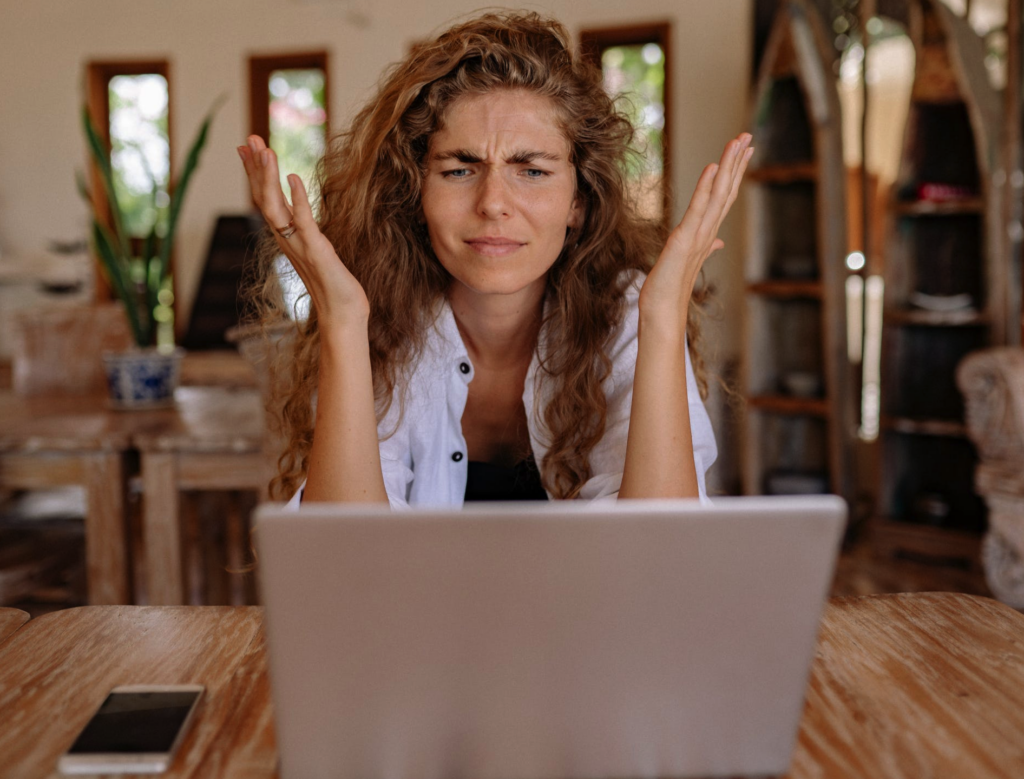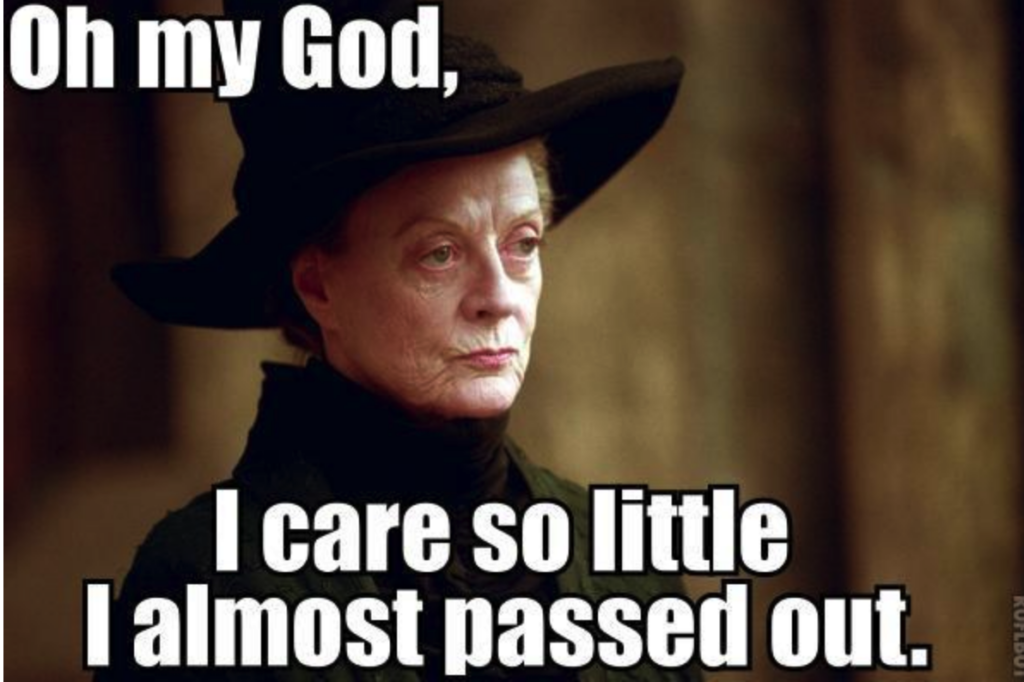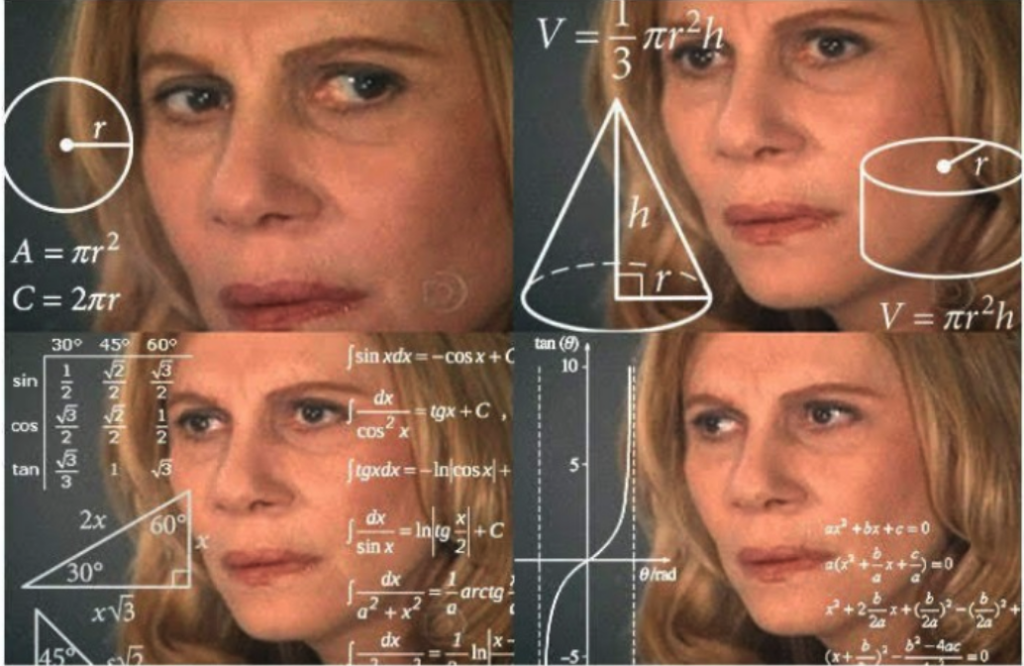
Narrative style is the beating heart of writing. While our voice might remain consistent from a blog to a non-fiction to a fiction, narrative style is what keeps our work fresh and makes it resonate.
Developing a strong narrative style is especially critical if we decide to write a memoir because the style will need to not only reflect the personality of the author-storyteller, but also hit that sweet spot in tone that is appropriate for the story.
But what IS IT?
Last post, I opened the discussion about memoirs. Memoirs are not only becoming increasingly popular, but with the implosion of traditional publishing, there’s good news. Anyone can write and publish a memoir. There’s also bad news…anyone can write and publish a memoir.
Before we talk about the various structures and types of memoirs, it’s a good idea to first discuss the broad concepts. Last time, I mentioned that superior memoirs frequently DO reflect The Hero’s Journey.
That was our first meta-concept, so to speak. The second meta-concept is narrative style. This aids us in connecting with audiences and generating long-lasting resonance.
Narrative style can be one of those amorphous concepts that’s tough to define directly. Sort of like black holes.
Scientists don’t per se observe a black hole directly, as much as they suspect they might have a black hole because of what’s going on around a certain area in space (the behavior of light and nearby planets, etc).
This said, all creators would be prudent to keep some core principles in mind when writing anything from a blog, to a non-fiction, to a memoir. These principles lay the foundation for what we think of when it comes to ‘narrative style.’
Narrative Style & The Essentials

It’s just wise to appreciate how the human mind works whenever we’re creating. There are certain aspects hard-coded into the brain. Thus, when we grasp the basics of what hooks readers and what shuts them down, it offers major advantages.
Whether writers want to admit this or not, we are creating a product we hope others will pay to consume. That they not only will consume the product, but then will recommend our product to others.
While developing then strengthening our own unique narrative style will certainly help, it will be simpler to explain the impact of narrative style with some context and basic psychology.
Essential #1: Order
Our brains desire order.

The human brain craves order to the extent it will manufacture order when no order exists.
Have you ever been driving and seen an outline on the road ahead? Your heart hitches because you’re certain some poor critter ended up under the wheels of a passing car.
Yet, when you get closer, you let out a sigh of relief because it’s just a rumpled pile of fabric. Someone lost a jacket. WHEW!
This is our brain seeing an outline and configuring the shape into something that makes sense given the context of dim lighting, road, and driving.
It’s also how people see pictures in clouds, whorls of wood, or how some see Jesus on a slice of toast.
MY Jesus is gluten-free 😀 .
Okay, don’t shout me down! It’s still okay to LAUGH!
Anyway…
Anything too chaotic from a website with too many flashy ads to a remote control with too many buttons turns most people off. Humans have a primal desire for cohesion and congruity, which is where narrative style becomes important.
Writers can harness narrative style to imbibe order that not only makes sense for the material, but that hooks readers into wanting to know/read more.

Me (as an author) simply sitting down and writing a chronological account of every weird, bad, tragic, or interesting event in my life as I remember it could technically count as a memoir.
Yet, as I chastise those who write novels, there is a BIG difference between authentic drama and “bad stuff happening.” Memoirs don’t get a pass.
Who wants to read 55K+ words of a ‘story’ that reads like a police report, or is too reminiscent of that family member who can’t stop relaying account after account of every time ‘someone done her wrong?’ Or that sounds like the coworker who name-drops and brags all the time?
Structure (Hero’s Journey included) is the mortar that gives events cohesion. It offers a point to the conversation, whether this is a novel, a non-fiction, or a memoir.
There are many options for structure, and structure is a major component of narrative style.
Essential #2: Congruity
Narrative style needs to be congruent with the content, the ideal choice to deliver whatever story we want to tell.

Narrative style can utterly change a story, sometimes for good, but sometimes not.
Remember Billy Mays? Talk about a famous voice. Great salesperson for Oxy Clean, but we might be horrified if a news anchor narrated pandemic statistics in the same style.
Why? Because the narrative style wouldn’t be congruent with the content (unless one is writing a dark…very dark comedy/satire or dystopian).
Speaking of horror, College Humor posted a skit where comedian Gilbert Gottfried narrated the audio version of 50 Shades of Grey. The narrative style incongruity is divergent to the point of being hysterical (or horrifying). Though morbidly funny, it’s definitely adult content so warning y’all ahead of time 😉 .
Remember that narrative style ideally should reflect your story (content) in the best way possible for maximum (desired) effect.
Essential #3: Audience
Writing is always, always for the audience. Anything else is a journal or diary entry…just for you.

I had some comments last post about this, and I hear you. As a teacher/writing instructor/editor, I get a TON of pushback on this point, too. Writers get really upset when I tell them that they’re writing for an audience of one.
***This happens a lot in science fiction and fantasy. The author falls in love with, say, the world-building. Tragically, they’re the only person who understands their world. When telling the story, they forgot to include the reader.
Right now, I’m finishing up a ghostwriting project (which is part but not all of why I’ve been remiss posting).
For me, the single hardest part of the ghostwriting process was identifying the best narrative style for the story my client wants to tell, then refining that style for the book’s potential audience. Since my client’s goals are to change hearts, minds, and hopefully laws with this material, we want the audience to ideally be as large and diverse as possible.
Finding the perfect delivery system was no simple task.

The book is about an extremely volatile, painful, and potentially polarizing subject. How could we relay the story in a way that didn’t overwhelm, confuse, depress, turn off, anger, or alienate the audience yet STILL preserve my client’s personality?
Because once the book is published, my client will likely be talking about the book and it should SOUND like my client.
And yet…
BECAUSE the topic is so controversial, I kept having to remind my client that the book (which is pseudo memoir/non-fiction) is ultimately FOR THE READERSHIP. Granted, it IS my client’s story/life/experience, but my job is to remind my client why it is vital to set aside ego.
There needs to be a give and take. Narrative style is an incredible tool to accomplish this balance.
If delivery is too strident/dogmatic, then a) we craft a book only my client and close associations want to buy/read, b) we end up with an ideological echo chamber c) we shut down the very minds we’re seeking to change.
Narrative style helps us walk that tightrope between an empowered person who’s overcome tremendous odds versus a pity party “poor me” tale.
Victim or victor is all in the way the story is told.
What IS Narrative Style?
If this were easy to define, then we wouldn’t have dozens of articles, books and classes to demystify the concept.
Today, I’ll put in my two cents and see if I can help some light bulbs go off.
Narrative style is—in its essence—that uniqueness that we as artists bring to the story. Remember, humans relied on an oral tradition for tens of thousands of years. We are a story people. Narrative style, in my opinion, is a holdover from that oral tradition.
HOW did a certain person tell a story?
I don’t care what anyone says, storytellers are the oldest profession 😉 .
Authors as Directors

Whenever we watch a movie, certain directors seem to stand apart. It’s easy to spot a Quentin Tarantino or a Francis Ford Coppola movie just from the style. What film is used, the light, the shots, what’s included, what isn’t.
Are the scenes in chronological order? Or does the story loop back and forth in time?
Narrative style is a close cousin to cinematic style, only we use words to paint a story instead of images/film. For instance, Ernest Hemingway became famous for his economy of words when his peers at the time lived by the mantra, ‘No modifier left behind.’
It’s fairly simple to decipher Hemingway’s work from Faulkner with a glance at a page or two.
William Faulkner included expansive details, used long luxurious prose, and wrote sentences that could span over half a page. Hemingway, on the other hand? Brevity to the point of being almost sterile.
Stephen King will still say in thirty words what probably could have been said in five, but it doesn’t matter because his fans love his particular narrative style. If readers had wanted him to write leaner, they’d have penalized him in the 80’s before he ever became a household name.
But what about narrative style in a memoir?

This can be a sticky wicket, depending on the memoir’s theme or focus. Obviously, a memoir is our story so narrative style should be simple, right?
Right.
If we’re relaying painful events, we risk becoming overemotional which might unravel the story’s cohesion. We could degrade into ranting or rambling.
Then there’s the flip side.
When we’re hurt, humans are known to compartmentalize out of self-preservation. Thus, our narrative voice could career over to the opposite end of the spectrum. We might sound robotic, sterile, or emotionally distant. Our story fails to resonate because the audience has better odds of emotionally bonding with a weather report.
If we’re writing a memoir to talk about fantastic adventures? Great! Yet, the narrative style again needs to walk that tightrope. We want a sense of inclusion, invitation, and for others to come along for the adventure.
Ideally, we could strive to convey enthusiasm and a healthy dose of humility lest we sound like a self-congratulatory committee of one.
Narrative Style & Empathy

A HUGE part of narrative style is our ability to empathize. The more we study the human condition, the easier we can get in the head of a character(s). Once this is accomplished, narrative style almost reveals itself.
When writing memoir, self-awareness is key. We all have wounds and wounds make great memoir material. But wounds can also create HUGE blind spots…which can mean a masterpiece or a mess.
To bypass these pitfalls, it’s a good idea to ask ourselves why we’re sharing these scars? What does our story have to offer a reading audience? What will others gain from us relaying our hurts, trials, or even our successes?
When we know WHY we’re telling our story and HOW we want the audience to FEEL, it’s then far simpler to narrow down and select the best narrative style.
It’s even easier if we have a well-stocked narrative cupboard to draw from.
Can we think of fictional characters that remind us of ourselves, that SOUND like us, then use them for inspiration? Are there authors with a narrative style that we can draw from and make uniquely ours? Can we cobble together elements of various styles?
Ironically, this is why reading fiction is so vital. By reading good fiction, we are essentially studying people through the lens of stories. Fiction is also fantastic for helping us strengthen self-awareness, which is why fiction can even help the memoir author.

Writers who read a lot of fiction are simply better at playing different parts and being convincing. They’re masterful at captivating an audience.
Reading a lot of fiction trains our narrator muscles, fills our creative reservoirs with a wellspring of options to parse and reconfigure and make into our own. Musicians do this all the time.
This is probably best exemplified in one of my all time favorite novels, Joe Hill’s Heart-Shaped Box which is a story about a heavy metal rock star forced to face his painful past when, on a whim, he unwittingly purchases a vengeful ghost.
Jude Coin, the MC, while on the run from the spirit determined to destroy him, takes a moment to work on a song that’s been simmering in the back of his mind. The description here is the perfect example of what we do when we search for the ideal narrative style.
Narrative Style & Heart-Shaped Box
Jude Coin:
The song itself might have been a traditional hill-country melody, sounded like something that belonged on a Folkways record or a Library of Congress retrospective of traditional music. Something with a name like “Fixin’ to Dig My Grave.” “Jesus Brung His Chariot.” “Drink to the Devil.”
“Drink to the Dead,” he said.
...The sound of it—the sound of the Ozarks, of gospel—gave him a little prickle of pleasure.
…A lot of his songs, when they started out, sounded like old music. They arrived on his doorstep, wandering orphans, the lost children of large and venerable music families. They came to him in the form of Tin Pan Alley sing-alongs, honky-tonk blues, Dust Bowl plaints, lost Chuck Berry riffs.
Jude dressed them in black and taught them to scream.
Heart-Shaped Box, Joe Hill, page 154
Good writers are artists as well. The more we read, study, learn and listen, the deeper and more resonant our work becomes. Like in my above example, Jude Coin might sing hard core heavy metal, but he adds depth and texture to his songs by being unafraid to weave in vastly different varieties of music. Doing this, he forms something new and wholly original.
Narrative style works in much the same way.
In the end, we can draw from personal experience, then marry those experiences with a narrative style that serves the story and the audience.
What are Your Thoughts? I LOVE Hearing from You!
I hope you see how narrative style is critical in all forms of writing, even in memoir. Maybe especially in memoir. My apologies for being remiss posting. To be brief, I live in Texas. We had a bad storm and our house suffered a major lightning strike that did some pretty bad damage and wreaked massive havoc.
Didn’t burn the place down, thank GOD. But made a GIANT mess out of life in general, especially since I was still working on this ghostwriting project.
I had to buy a new computer. We were without a refrigerator for two weeks while the repair company ordered a circuit board to replace the fried one. Also had the JOY of replacing most of the AC/heating unit. Fun times. I could write a MEMOIR about it 😀 …or not.
But a month and $12,000 in repairs and replacements later…I’m baaack 😀 . Not getting rid of me so easily. HA!
Here we are *catching breath* so thoughts? Comments? Any ideas why my laundry has cloning technology it is willing to share with the dishes and not ME? Have any ideas for classes you’d like me to offer?
Hey, I have missed y’all!








23 comments
1 ping
Skip to comment form
I published my memoir this spring, and probably my biggest struggle with narration was telling it through my present self, versus my younger self. This was pointed out to me by a substantivev editor, in the early stages of editing. I found it beyond my ability to step back from the memories and distinguish my younger self from my present self. After all, my odd and hallucinatory experiences (telling about my mental illness episodes) were just as puzzling to me now as they were then. I wonder what narrating in my “present” voice would have looked like other than giving the reader more explanation or commentary, if you will. Did I do my reader a disservice by immersing them in my younger self’s narration?
You have my sympathy for your storm damage. We went without electricity for 3 weeks in 2008 after Hurricane Ike. In 2012 the main electrical line to our house fried and took a few other things with it. We had to dig up the back yard to replace it.
Narrative style can be tricky. I tend to have slightly different approaches, depending on what I’m writing. My current fiction books are early 19th century speculative historical & the narrative style is more formal. I “don’t” use combined words with an apostrophe to replace one letter. That style means rethinking sentence structure. Another pet peeve i have is ending a sentence in a prepositional word like “Where did you go to?” Won’t do that no matter what I’m writing, unless it’s dialog. Does my voice/personality still show its itself no matter what I’m writing? Yes, because I’m comfortable with myself. Writing for an audience doesn’t bother me because I’ve worked in another creative field where the project was not only for the client but their intended audience. Which doesn’t make me special, but did help when I returned to writing longer projects last year. The person who reads a lot, especially one who is picky about quality, should be asking themselves “If someone else wrote this book & is asking $X for it, would I buy it?
PS – My new website is an e-commerce bookstore, so I understand if you can’t post this comment. But my plan is to make it available to other authors of all kinds in 2021. At least one featured guest author a month. Perhaps more if I can manage the work load.
Glad you’re still around. I saw a house struck by lightning when we lived in Flower Mound, sorry it happened to you. Great post and no politics inserted, thanks.
Kristen, I’m glad you are back. I missed your posts. What a challenge, surviving the storm & it’s destruction. From the way you write your posts (narrative style), I gathered you just picked yourself up and moved on. Which you did. I’m rewriting my first book after my editor suggested the story is worth the effort. He told me to put what I learned writing into it. Narrative style set me back to the 1950s & 60s, teenage & young adult years. Even dialogue words were different. I’m working through it chapter by chapter and including a huge compelling incident that adds more to the story flow. It’s been a an awesome journey for me to add elements of music in the story. Musicians in the family play a big role in the historical fiction theme. Thanks for making me think about narrative style. And peaceful times for you getting back to normal after disaster struck. ?? Christine
Author
It took time. Not going to lie. Everything broke almost all at one time (nearly me *groans*). So thank you and yes, I miss y’all every time I have to take a break.
As to your book. YES! Writing in a different time period is tougher than most people realize. Slang, references, idiomatic expressions, attitudes (societal and cultural) and even the way of LIFE is all different. What would people notice? What would be common then that is now obsolete (unsliced bread)?
One thing that makes me BONKERS when reading any period piece is anachronisms. I also see so much writing that tries to overlay 21st century norms onto an time where certain roles, behaviors, attitudes just wouldn’t exist. And if they did? They would be outliers.
For instance, I watched something set in early 1800s with a pushy female reporter as a main character. Yeah…NO. No female reporters at the time. First female journalist wasn’t until almost turn of 19th into 20th century. Also, journalism as we know it (an industry/profession) was actually very new and not entirely canonized. That and, though not PC to say? NO man at the turn of the 1700s into the 1800s would have given a pushy female digging for sensitive information and demanding answers for ANYTHING the time of day. Men during that time would have laughed in her face if they didn’t slap it first.
We’ve come a long way, Baby.
Another book I read not too long ago (again set in EARLY 1800s) had a character who was shot in the leg and a SURGEON attended him…wearing a pristine white coat, then proceeded to perform a rudimentary version of modern surgery to remove a bullet and suture the damages tissues.
In the early 1800s? NOPE. First of all, surgeons were essentially a janitors with bone saws and buckets. They had ZERO prestige. The injured person would have seen a DOCTOR if they wanted “skilled” care. Then? Read the biography of Joseph Lister. The doctor would have been in a suit (everyday clothing), with manure on his boots and probably smoking a pipe while poking around an open wound. Oh and again, it was a gunshot wound to the leg, which meant immediate amputation.
*Kristen throwing books*
Long way around YES! Details can elevate a story when we take the time to get them straight. Best of luck!
Thanks, Kristen for your further informative response. After reading your pet peeves writing in different time periods, I can see you “throwing books.” I was lucky that my editor picked up on some things that were outside the 50s & 60s. And I made adjustments the more I researched. Questioning did that happen then, could that happen then? Some of the medical history needed to be what was done at that time and what was available at that time. I really spent more than half of my writing time on research. Well-worth it! ? Christine
I agree. I demand authenticity in time periods when I read–or even watch TV shows.
Glad to see you back.
This is quite a cohesive summary – my mind appreciates its orderliness! It reminds me of a fellow writer friend, who has written two published novels and quite a number of others as yet unpublished – he’s a WWII veteran with an extraordinary life-experience resume. He told me once that he was putting his life experience into novels because “who wants to listen to some old man rattle on about what he did?” This man does anything but rattle on about his own exploits, but has mastered that balance of telling the story and revealing what he’s done with himself over the decades. I cherish his friendship and wisdom as well as his stories and books.
Your friend sounds wonderful. I’d love to see his novels.
A memoir should offer insight and focus on the issue it is addressing. Keeping the audience in mind helps in the writing process. I often found myself asking “Is my reader going to care about this anecdote or further detail?” I abandoned my memoir and my agent at the time in 2009 for compelling personal reasons. Intact, the Jan or Feb 2021 memoir/info guide I ended up writing these last two years is far more insightful and addresses the triangle that is bipolar depression, addiction, and trauma. I had read two compelling, best-selling memoirs concerning bipolar depression. The writers were in active addiction and blamed addiction on their mental health condition and were in denial of their addiction. Those memoirs are part of what impacts stigma, which translates into job discrimination and more. Mental health conditions can lead to addiction re self-medication, but both conditions need to be addressed and treated.
Sorry to hear about the storm in Texas…it has been a crappy year all around, perhaps 2021 will be better (Fingers crossed) My son lives in Dallas, but that was pretty far from the storms. I really enjoy reading your blogs, and have 2 of your books. Yeah….I’m a fan! So much of the information you share is really inspirational to writers and bloggers. I have 2 blogs and am currently writing a book about the National Park Service. Even though I write features for local publications and don’t write fiction…I find alot of your blogs really helpful! Thanks so much! If you would ever be interested in looking at some of my travel features my blog is at:americantrekkerblog.com Thanks for all the inspiration you provide! Julie Etta Smith
Welcome back–I have missed your input.
I’m working on a biographical project… in a sense, writing someone else’s memoir. This post offers some great food for thought as I enter the self-editing phase.
Thank you!
Hi Kristen,
I just read your post on narrative style(s) of writing. It really piqued my interest relative to a story I’m working on. I’d like to ask a question or two if I may about about yhe memoir format you mentioned.
First off, does the memoir have to be yours or can you narrate someone else’s fictional memoir?
I’m telling the story of my MC who grew up during the Depression in a large farm family. Her mother viewed her ss free labor, putting her to work at age five doing dishes. It Chronicle’s all of the jobs she and her siblings have to do to help the family survive. While her mother was a tyrant, her dad was the opposite, kind, industrious, and loving.
She got married out of high school and spent 20 plus years in a marriage from hell, raised rhree sons and survived a brutal husbands temper. She finally divorced hom and met the love of her life, enjoying another 20 plus years with him.
She lost two sons and her prince before going to live with the third son. He took care of her for 14 years, watching her health slowly deteriorate until she passed at 92 from pneumonia. They had many clashes between her Depression survival mentality and his modern “throw away” ideas.
Second, how much detail would be appropriate to share all of the nasty jobs she learned to do to help the family survive? She had to help dress chickens for market; pick tobacco worms off the crop, milk cows, etc., besides help her mom cook and do houseeork.
I try to give a flavor of what farm life was like during those years. Following her brutal marriage takes twist and turns as does her final years of poor health.
I apologize for being windy here. Your post rang a lot of bells and I had to ask questions. I sincerely appreciate your time and thank you in advance for any unsight, comments or thoughts.
Larry Hoke
Arlington, TX.
Author
Ghostwriters like me have written memoirs for other people for ages. And memoirs are true events relayed as a story, so they aren’t fictional. Like, if your subject really never served in a war, you can’t just add that in there to spice up the story. Then you have a novel (a work of fiction).
Obviously, we can’t relay every dull detail. We have to fudge, smooth, condense or even skip events because they aren’t salient to the theme of the book.
Of course you can tell someone else’s story. A lot will depend on your relationship with the person. Are they still alive and just need a skilled writer to tell their story? Do they want their name as the author on the book?
If you are telling another person’s life story and they’re not directly involved, it seems to fall more into (authorized/unauthorized) biography and narrative non-fiction. If the events are plotted out like a novel, then I’d look to Erik Larson’s work (“The Devil in the White City,” Isaak’s Storm”).
The level of detail is up to you. That’s narrative style. Some readers LOVE a lot of detail. I am one of them. BUT, I love detail to the point it serves the story. There has to be a REASON for all that detail. Fancy descriptions does not a story make.
I’ll talk more about the different ways we can write a memoir. We can pick one core point and structure it like a novel. Then, there is the essay form. It’s a collection of essentially short stories that all serve an overall theme. For instance, Jenny Lawson’s “Let’s Pretend This Never Happened: A Mostly True Memoir.” While all the stories are different, they’re connected via Lawson’s voice and support the theme of her very strange upbringing and oddball life.
Unlike Erik Larson’s books, you wouldn’t be able to skip around. You HAVE to read beginning to end, lest you get hopelessly lost (like a novel).
Conversely, Lawson’s memoir has no such requirement. You could read a story in the middle, toward the end, then in the beginning and still be okay.
I hope my answer helped, and I never mind long comments or questions. It helps me figure out what I might need to blog about.
Hi Katie, My memoir and info guide is almost done. I narrate in my present voice, but I recollect vividly what I was thinking. At times completely illogical. It was important to show the path of thinking evolving from subconsciously wounded and harmed by certain aspects of the medical system to working steps in 3 different 12-step groups and finally getting a therapist at 26 — it was important to show how my thinking changed, but only because of the tools I was given. Title says it all. Intact: Untangle the Web of Bipolar Depression, Addiction, and Trauma. It is a web.
It depends on your audience which voice you use too. I’m sure your editor helped. With me, there were also processing challenge issues, if you don’t know how to deal w dyslexia or other challenges, that’s not helping one’s economic cause or mental health cause.
Present or past voice I don’t think is as critical as focus. Memoirs are not autobiographies. They are issue oriented. I know yours was focused. I have read many memoirs….
Well. This was perfect timing for me.
I’m in the middle of revising a memoir about my road trips to bookstores around the US, and I have some great road stories to work with. The problem is that I’ve found myself saying “Ooh, that’s a good scene. And that one, that’s good. Oh yeah, I really like this next one.” But the book has largely been just that … scenes, moments strung together one after the next.
My solution, which is actually turning out to be really fun to implement, isto incorporate a fictional element that pulls everything together. I think I’m leaning on fiction to give my story structure. I’m very familiar with structuring novels, but I’m much less experienced in structuring *my* story. This post has opened my eyes to the fact that recitation and memoir are two different things, and I don’t need to use fiction as a device to order my “plot”. Although, I think I’ll keep the fiction throughline … that way I get to keep the bookstore magic 😛
I learned so much from reading this post. I am currently a writing coach to 23 individuals who came to me not even thinking of themselves as writers (Advanced Writing class, UHCL, Houston Texas). Most of my students who WANT to write (It is a required course for all HSH majors.) need your kind of advice. Thanks for putting thoughts that might help them in my head.
Your graph on how you tell a story cracked me up. I felt that. I’m a new blogger with a memoir in my head about my year old studying abroad in Seville, Spain. I’m not a trained writer so this “narrative style” post and all the comments have been quite eye opening. I have a lot to learn!
Looking forward to more posts and glad I found your website!
Author
Great to meet you! Hope to see you again in the comments 😀 . You already have an inherent writing voice. It’s just modifying that to fit the stories you tell. Read a lot and that will help.
Thank you so much Kristen, Sorry for delay – just saw your comment, finding my way around wordpress still. I’m interested about what you mean when you say “modifying to fit the stories you tell”. Is there an article that you can point me to that may give me a clearer understanding.
I definitely need to read more!
I found your site this evening, signed up, and this is the first article I’ve read. I have to say I smiled reading your point that all writers write for an audience of one. I used to tutor high school students (mostly athletes, as it turned out) in writing. I’d always start by telling them writing is a conversation between you and one other person…the reader. And that “other person tends to have a short attention span and will try to escape at the earliest possible opportunity. Part of your job as a writer is to keep that reader involved with the conversation. Because without her/him, you’re just writing in your diary/journal, basically talking to yourself. That’s always been my mantra, so your perspective helped me to feel I wasn’t completely off base. Many thanks.
Author
Not off base at al. In fact, you added some very good points that I totally tend on stealing 😀 . Readers are looking just as much for reasons NOT to read as they are to keep reading and we always have to keep that front and center.
[…] Lamb takes a look at narrative style: the heart of storytelling and why it also matters in memoir, and K. M. Weiland looks at the midpoint as the swivel point of your story’s linked […]